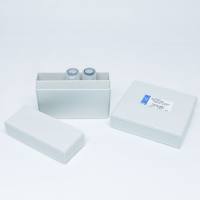Mutations in the gene that encodes the protein, dystrophin, underlie the allelic disorders, Duchenne and Becker muscular dystrophy (DMD/BMD). Although the complete spectrum of mutations has not been fully defined, the largest category of mutation is one of intragenic deletion (1 ,2 ), and this dictates the molecular diagnostic strategies that are employed. Other important factors that influence the approaches adopted in the molecular analysis of both DMD and BMD are the large size of the gene and its X chromosomal location. The dystrophin gene comprises a total of 79 exons, extending over 2.4 Mb of DNA, and is the largest human gene characterized to date (3 ,4 ). The exons are of average size, ranging between 30 and 300 bp (4 ), as shown in, and are sparsely distributed, although some of those that code for particular protein domains are clustered. For example, exons 65–67, encoding the cysteine rich domain of the protein, are contained within 6 kb, and exons 68–74 lie within 14 kb, encoding the syntrophin-binding region (5 ). However, it is the introns that make the greatest contribution to the overall size of the gene. For example, intron 44 is 270 kb, and brain intron 1 extends for 400 kb (the 5′ end of the transcript has four alternative first exons, which are expressed in a tissue specific manner [6 ]).






